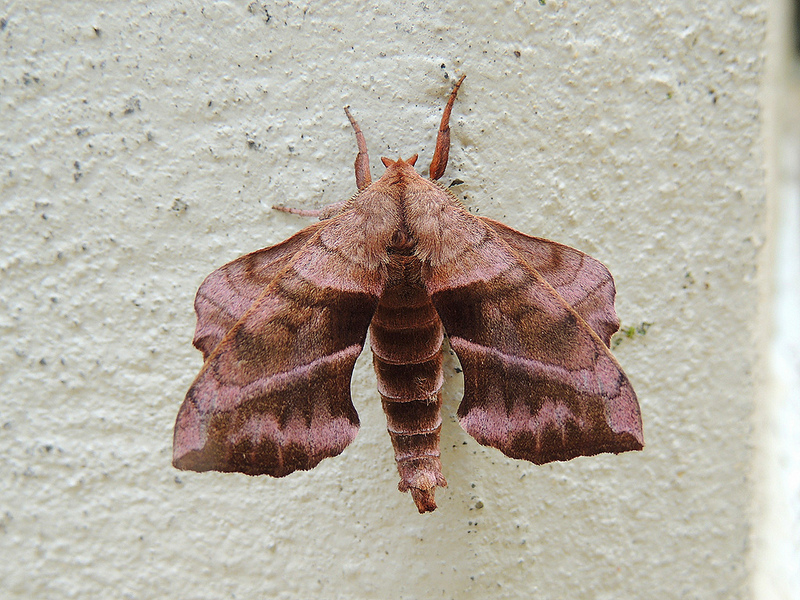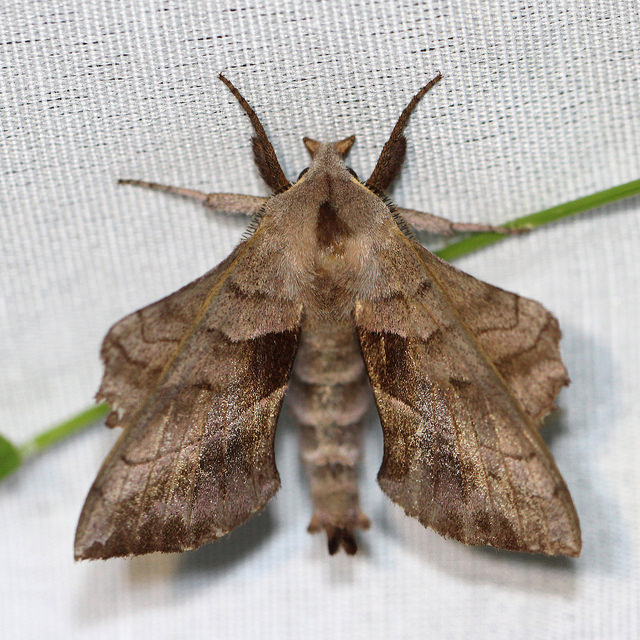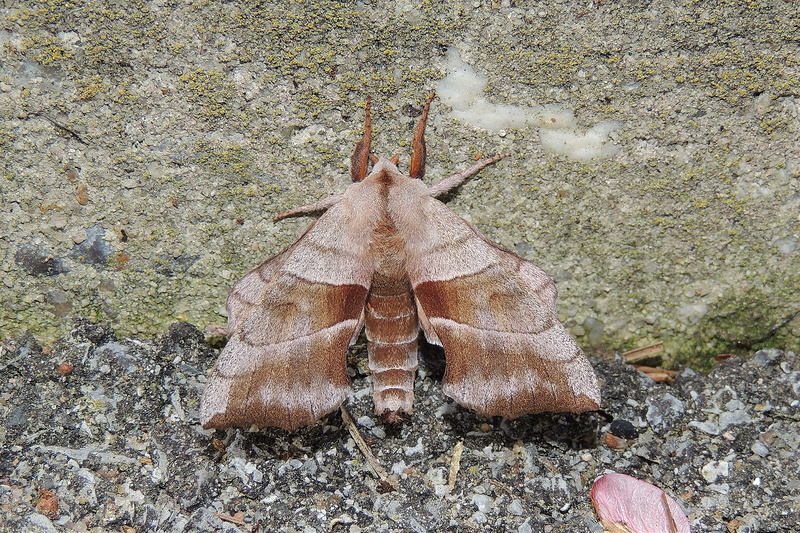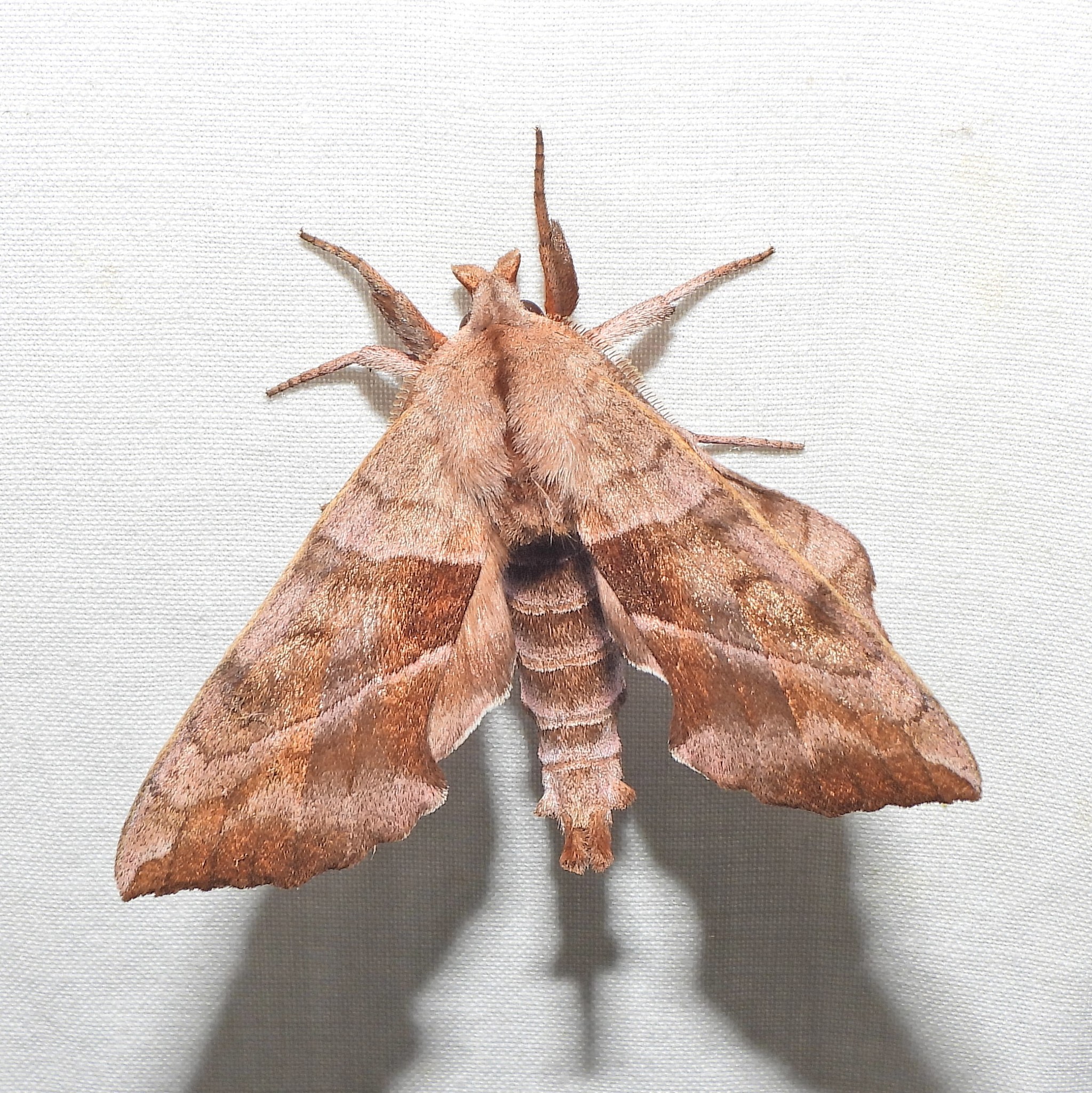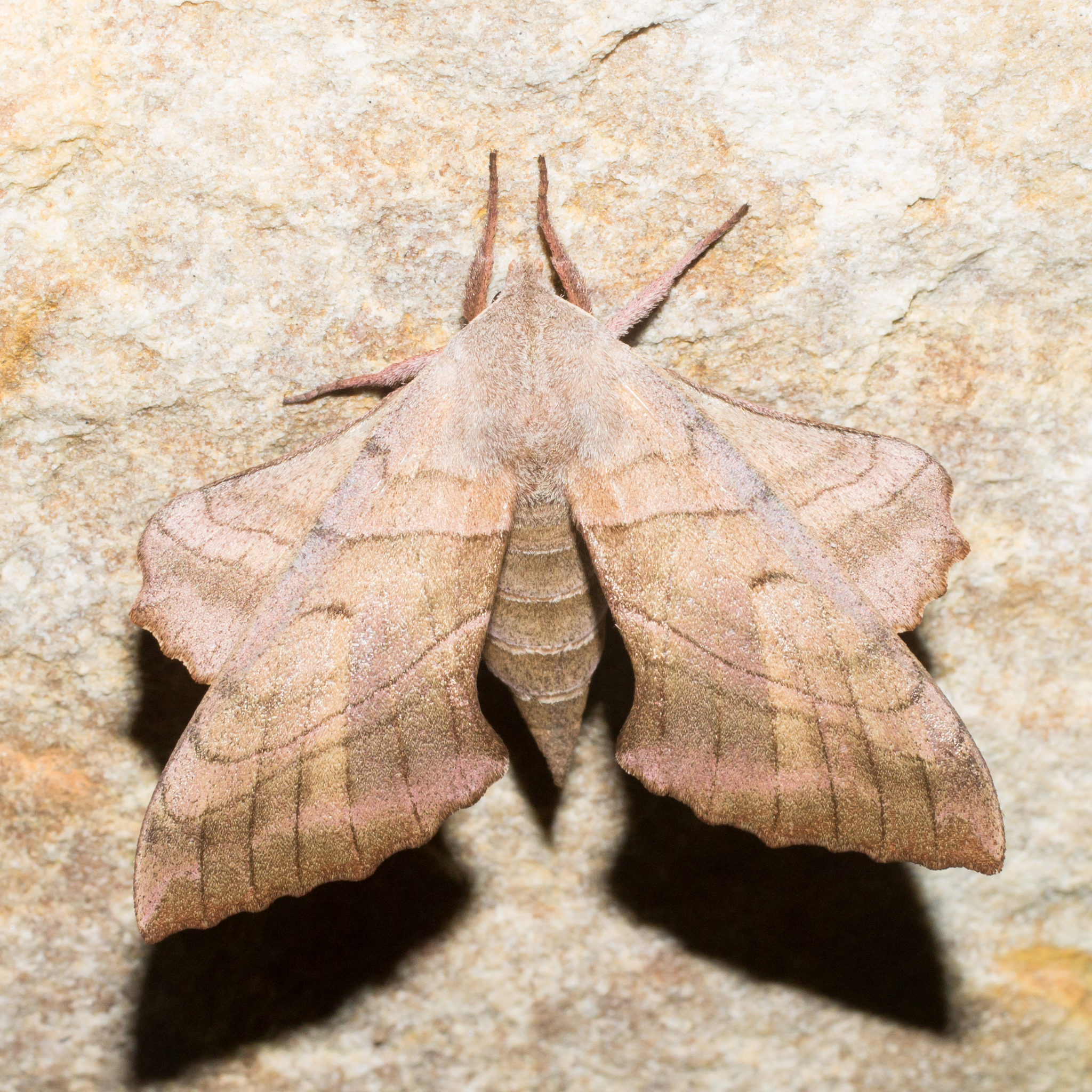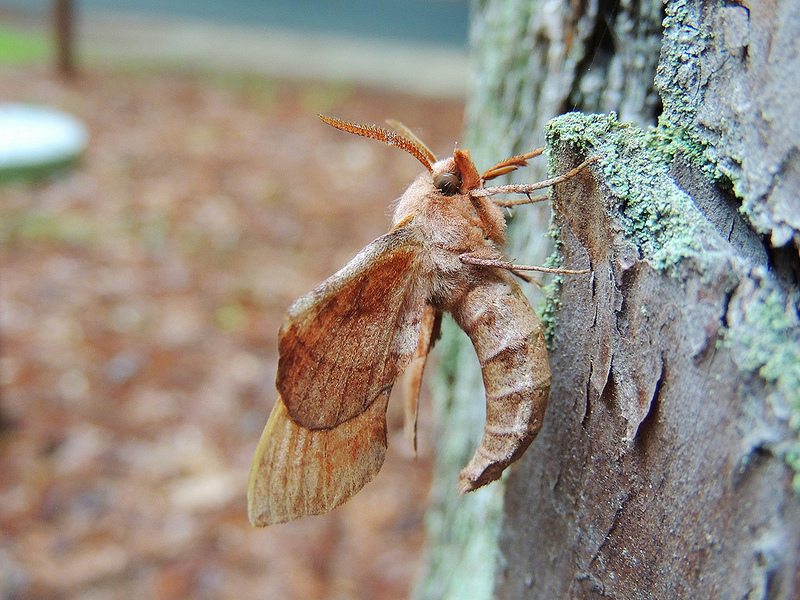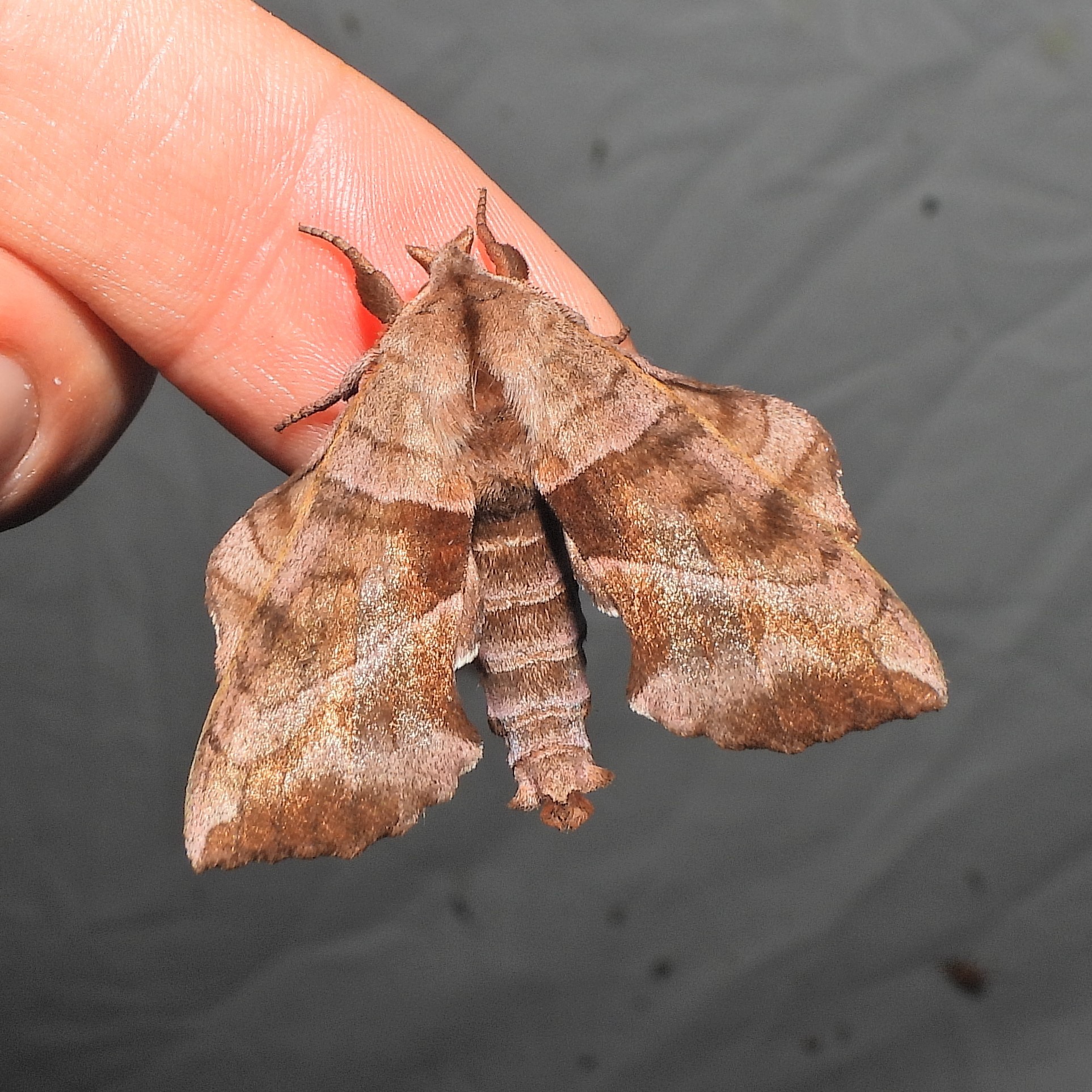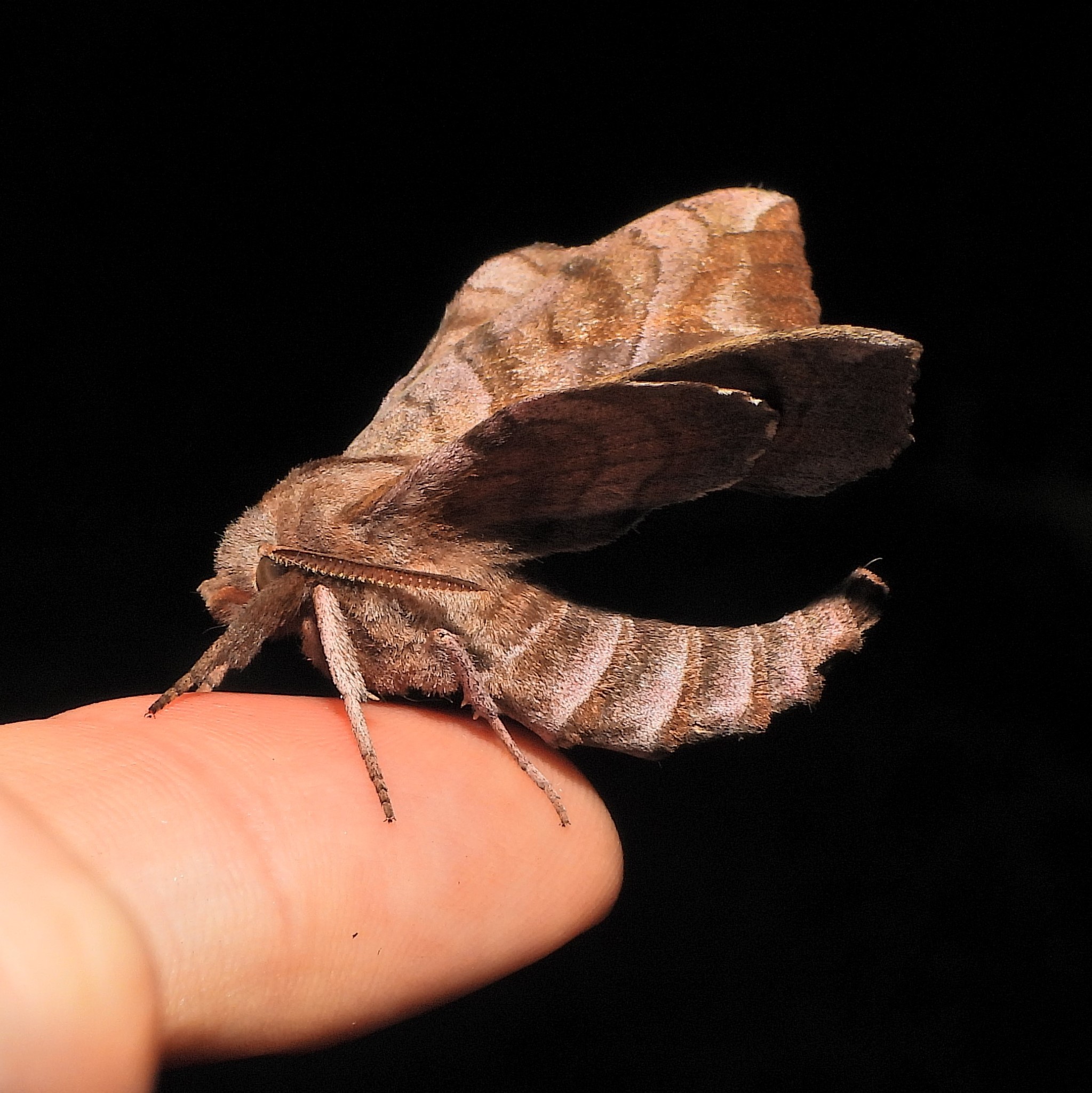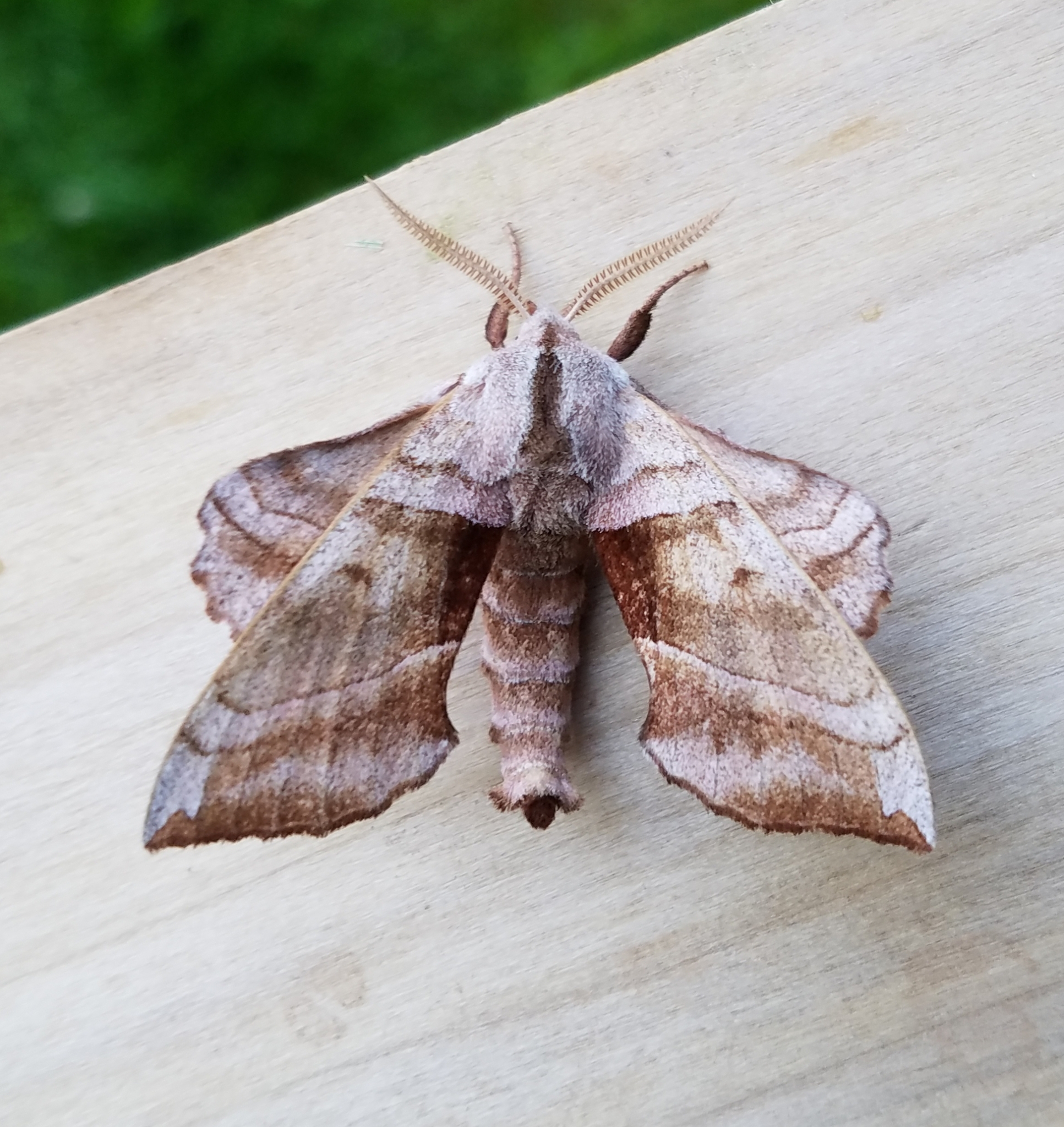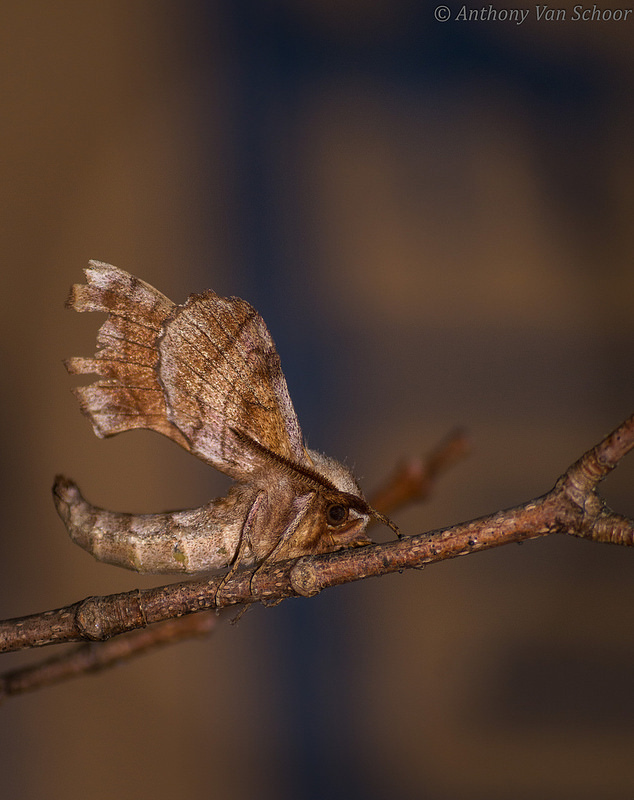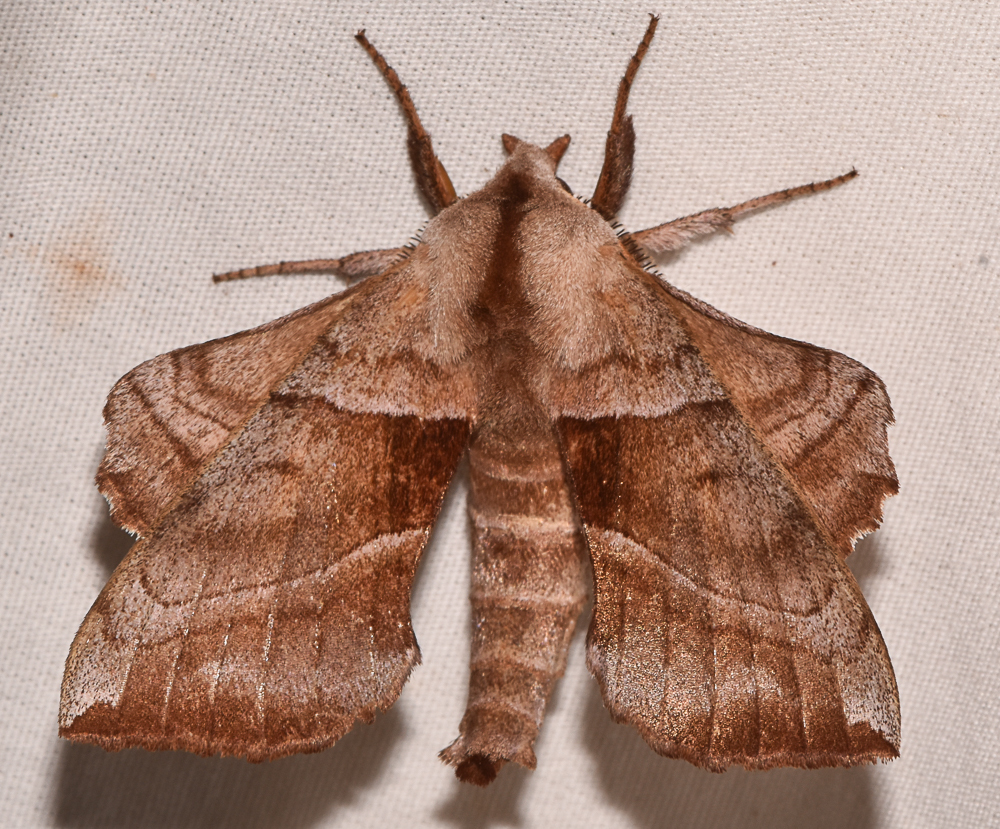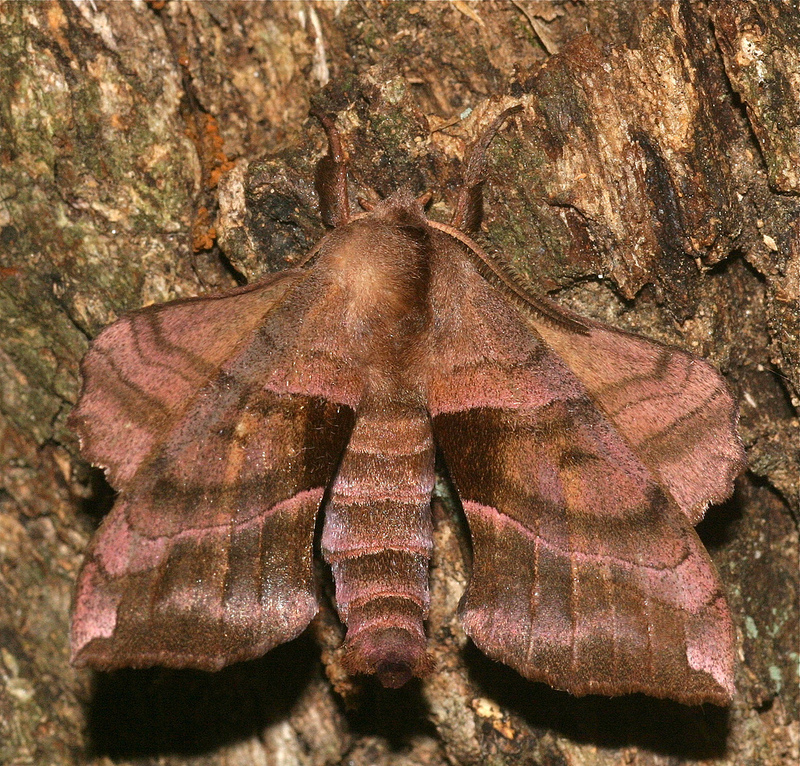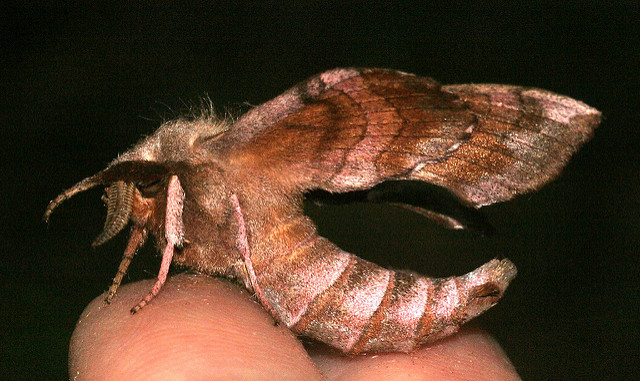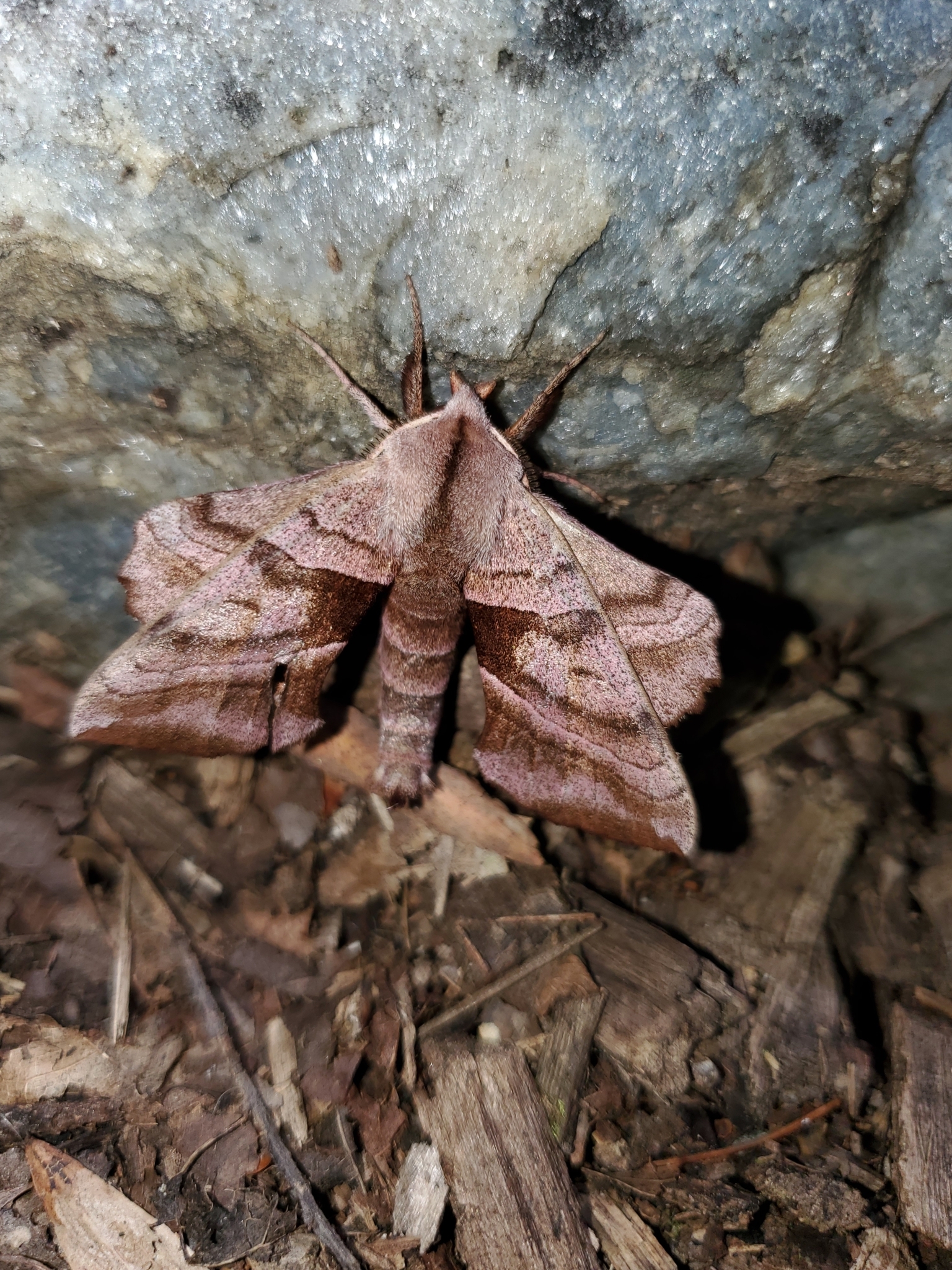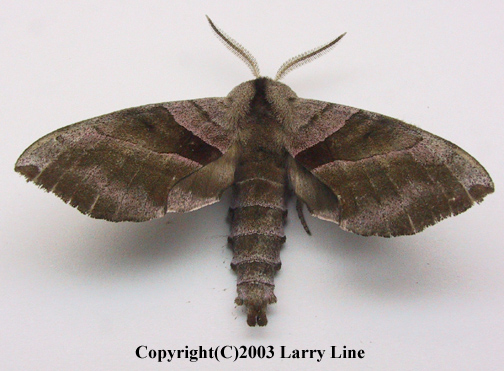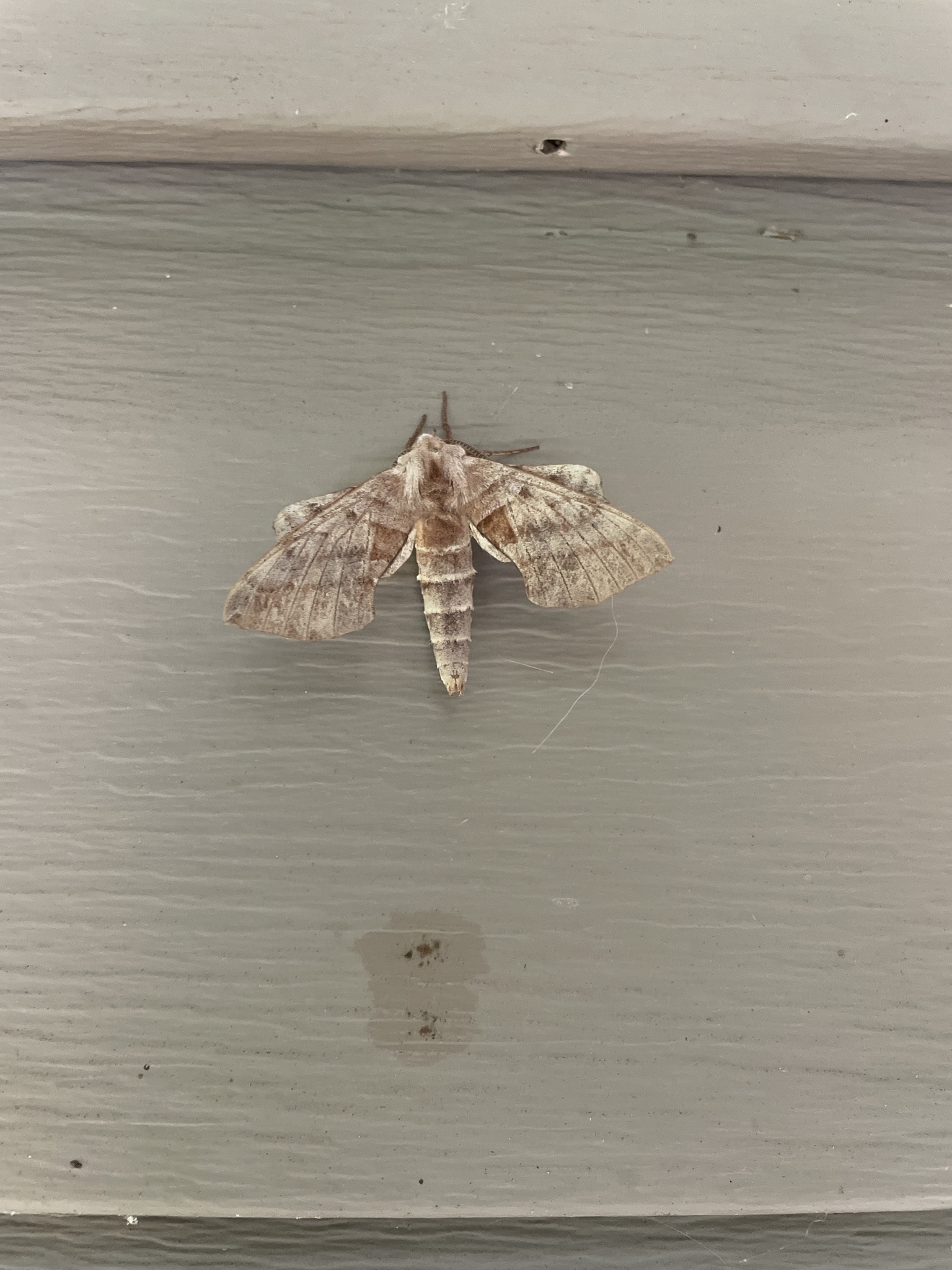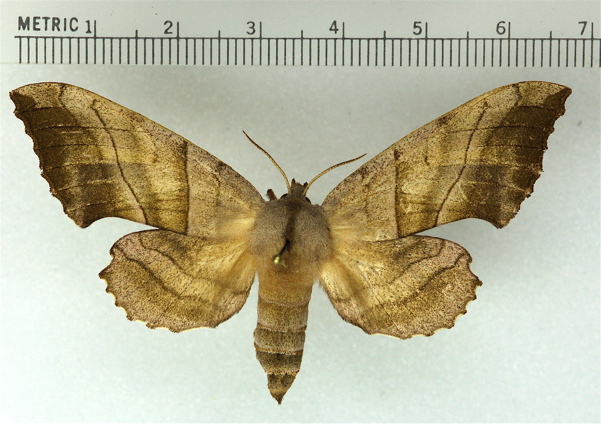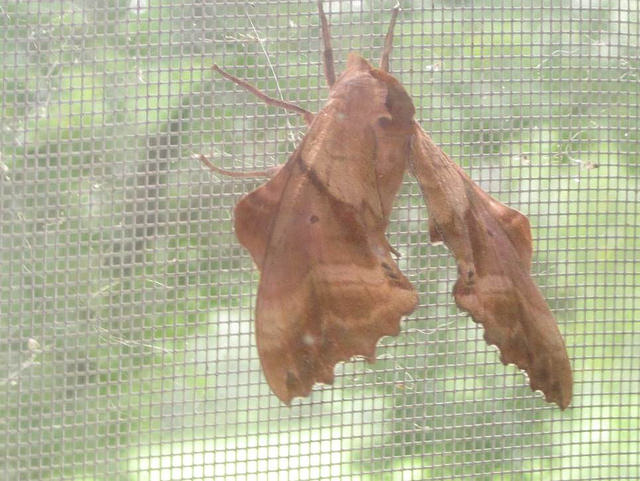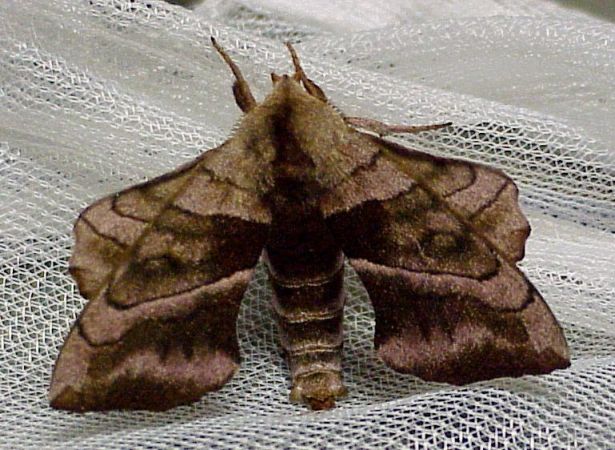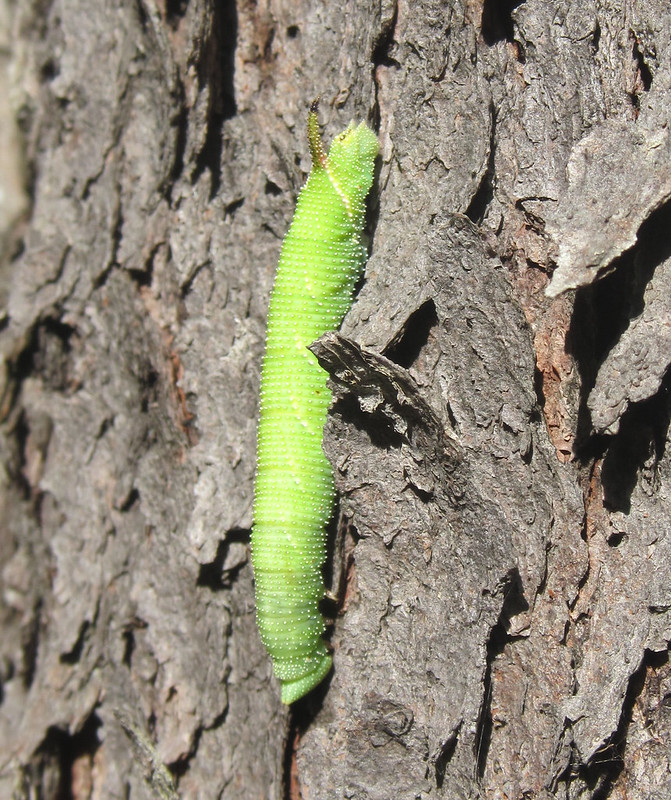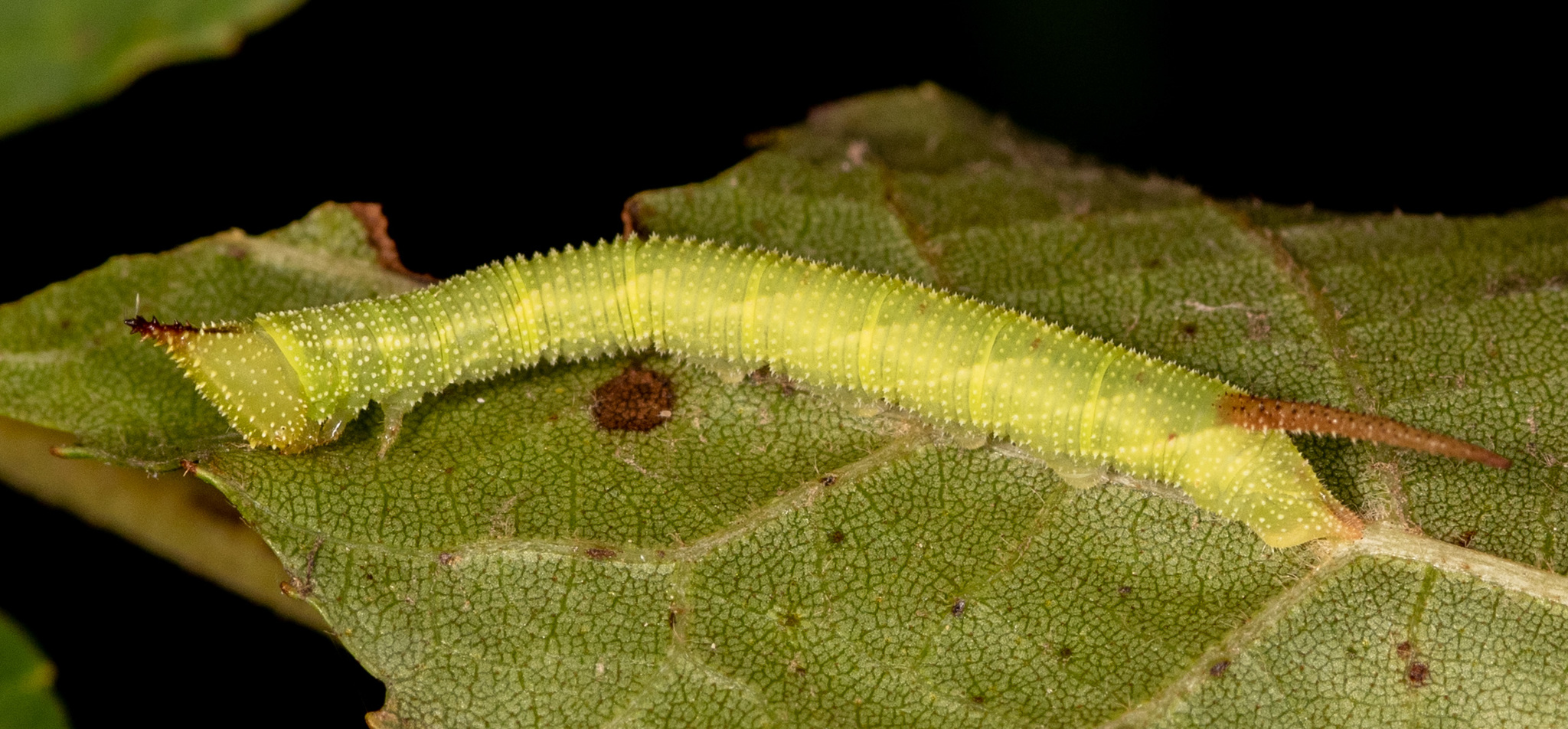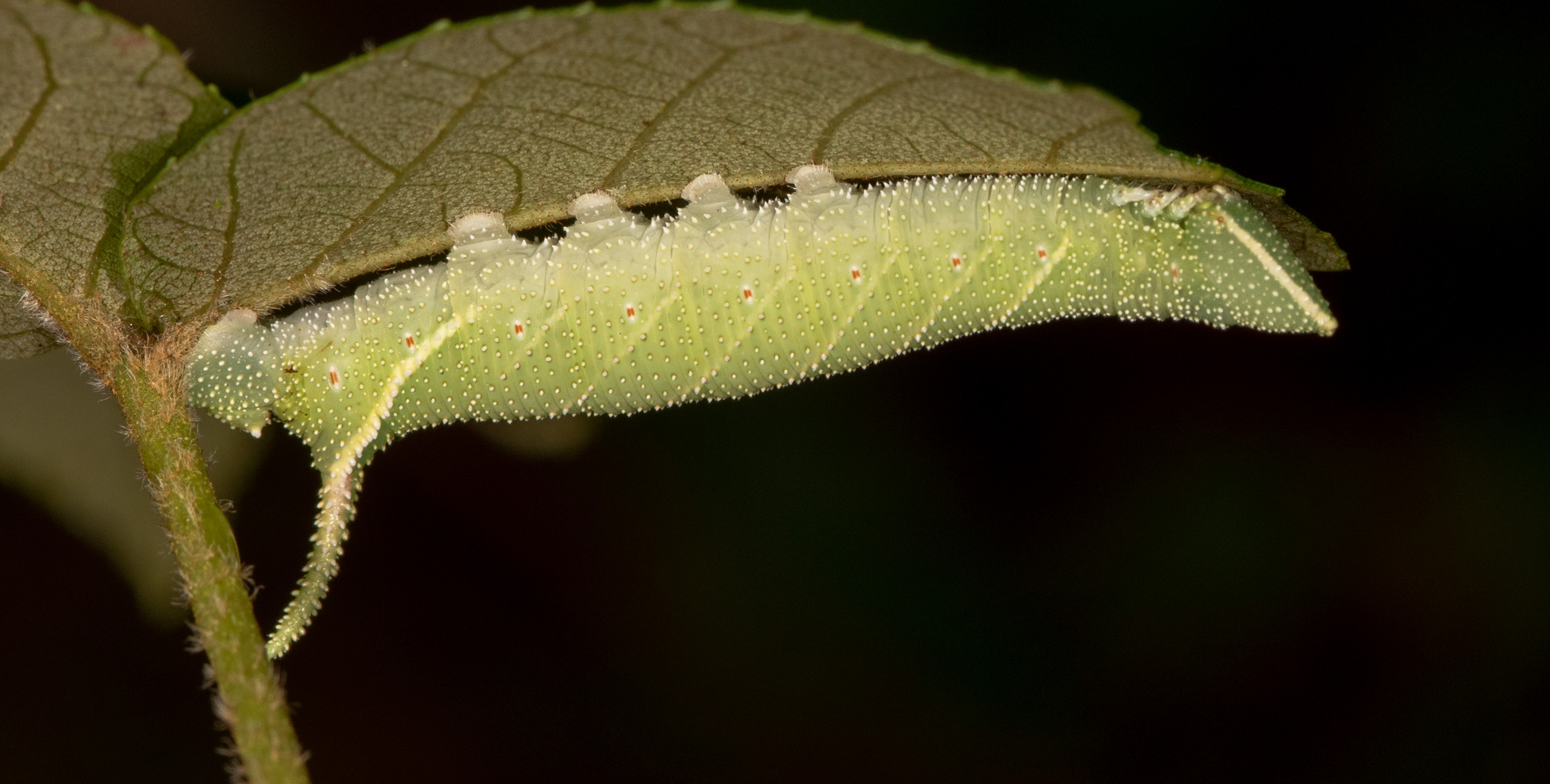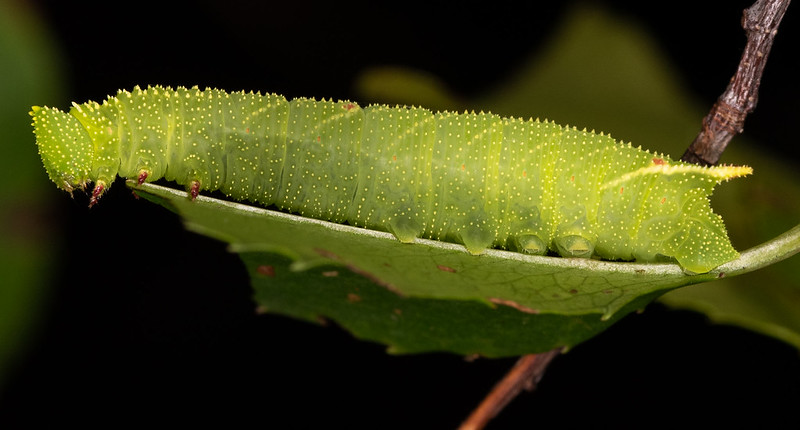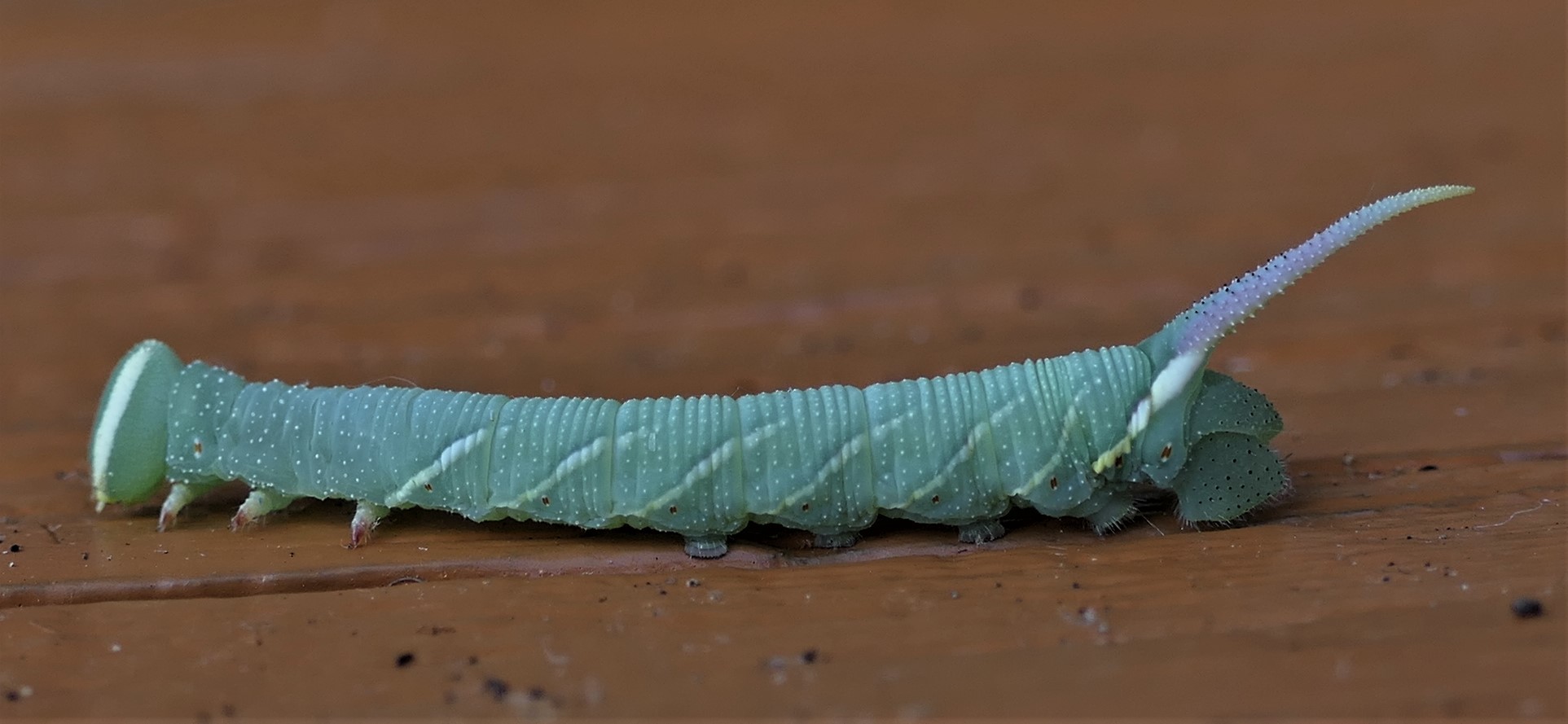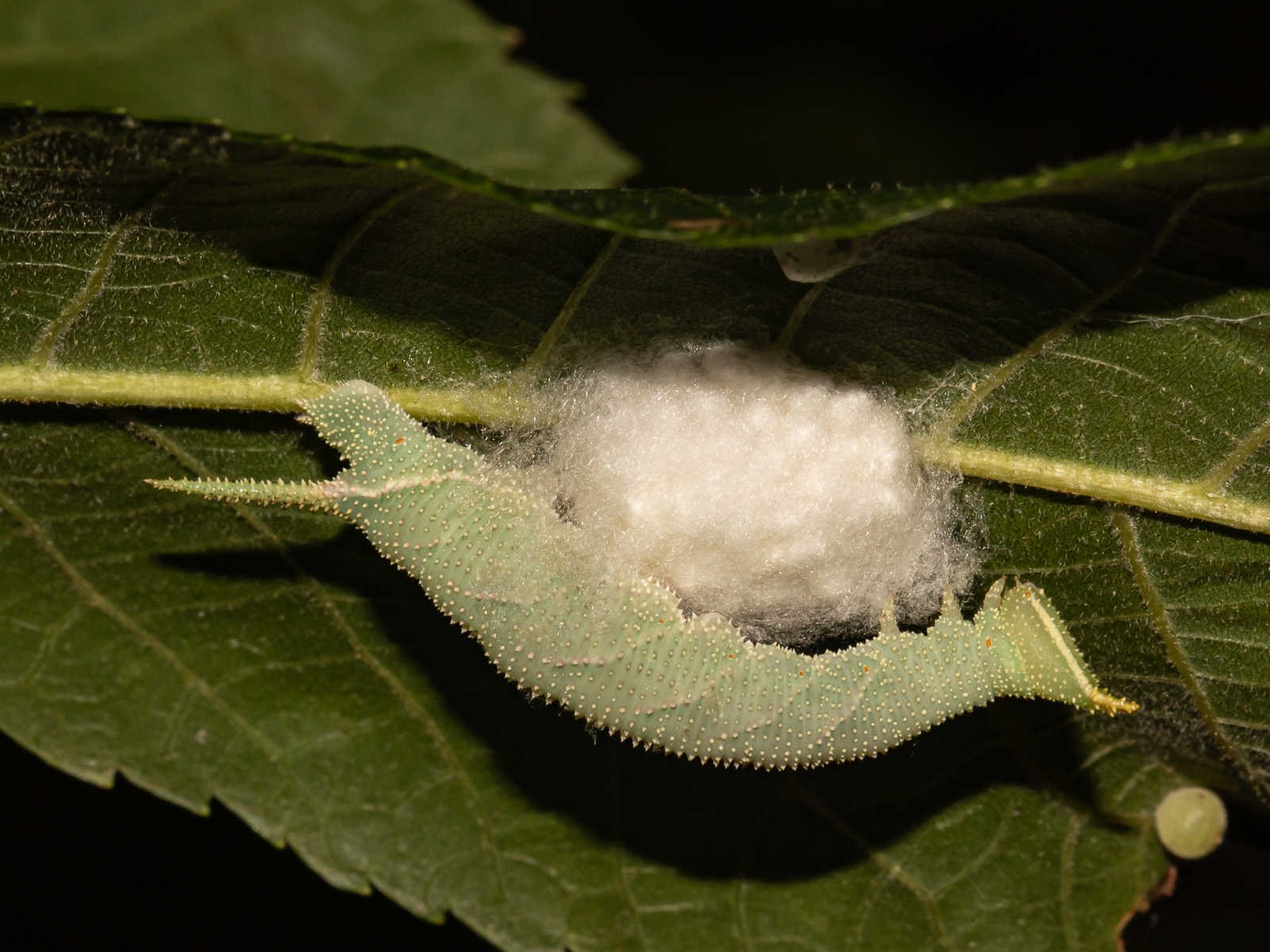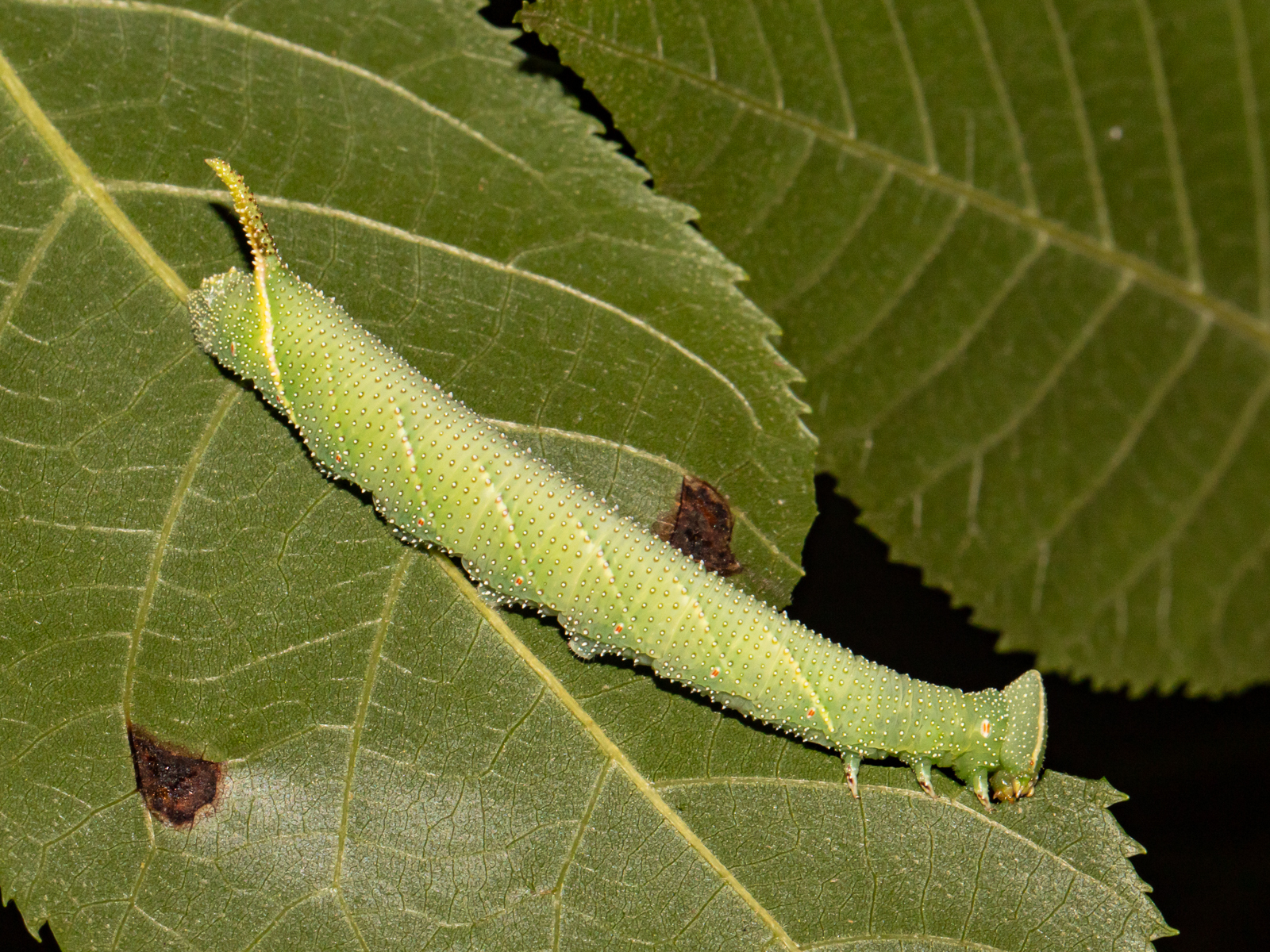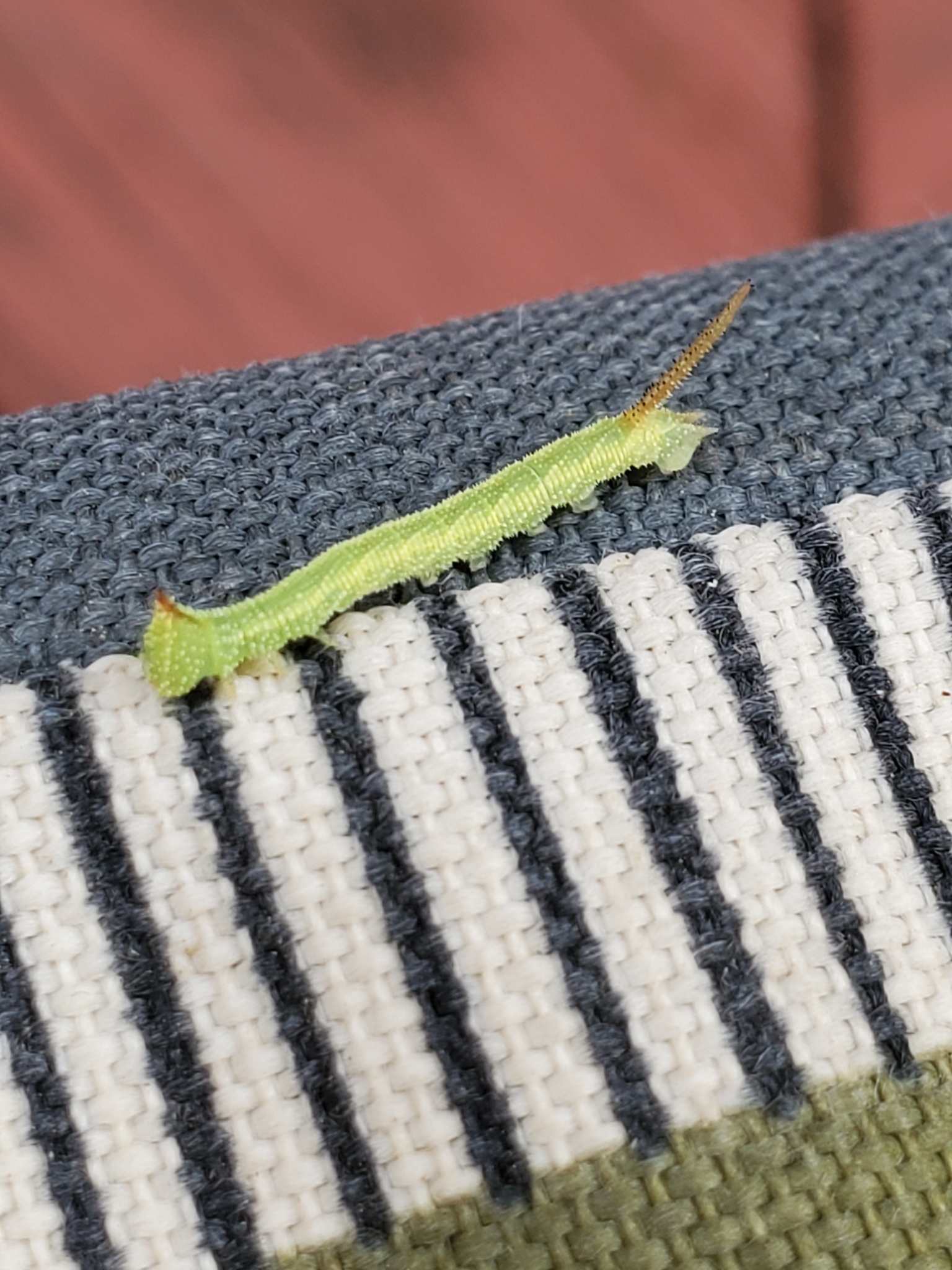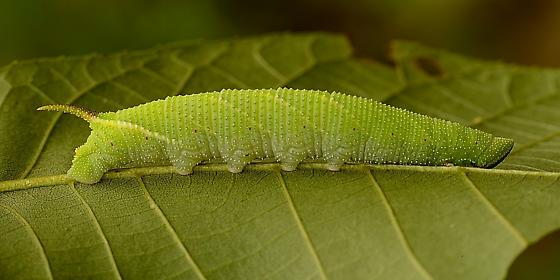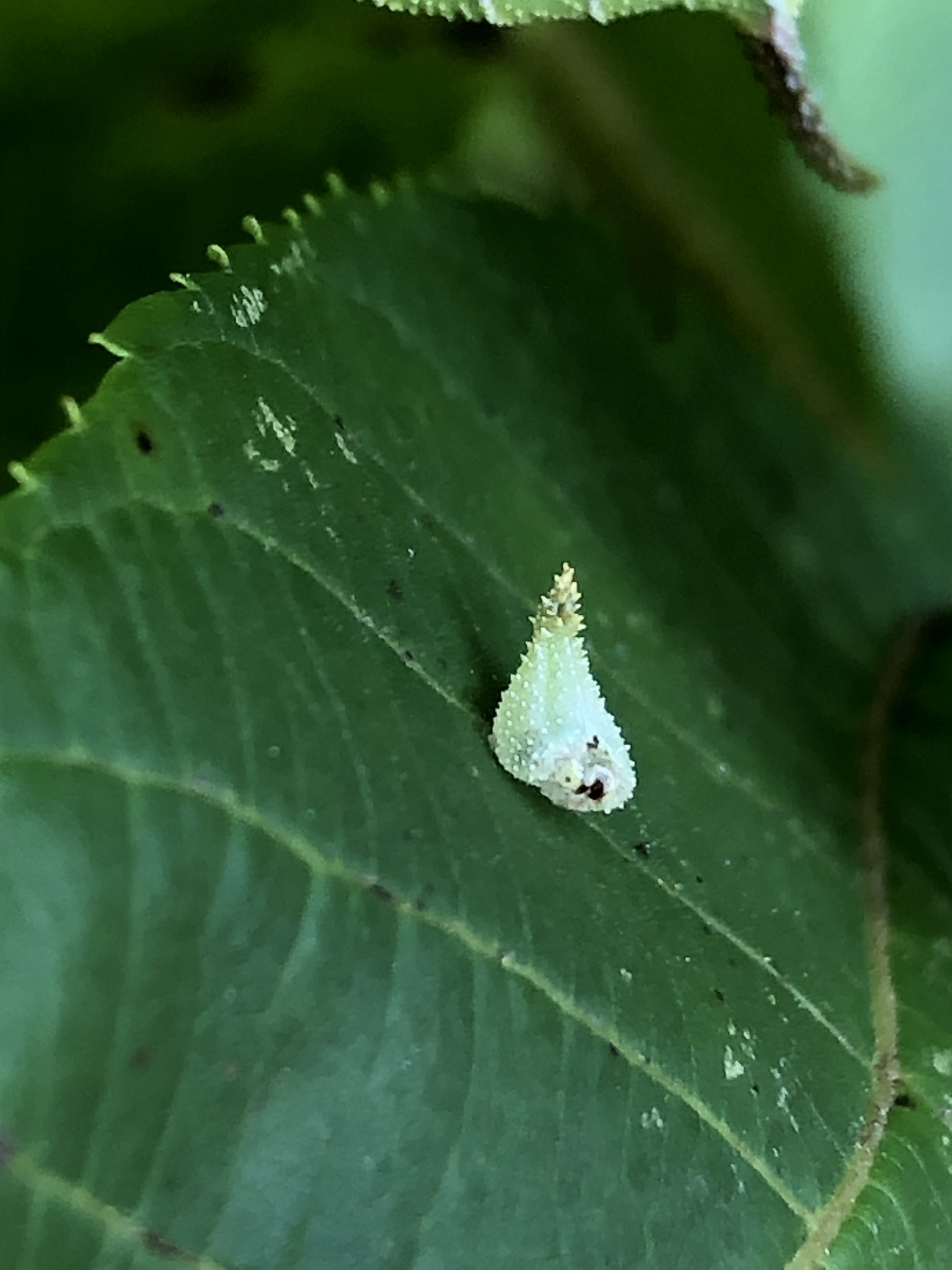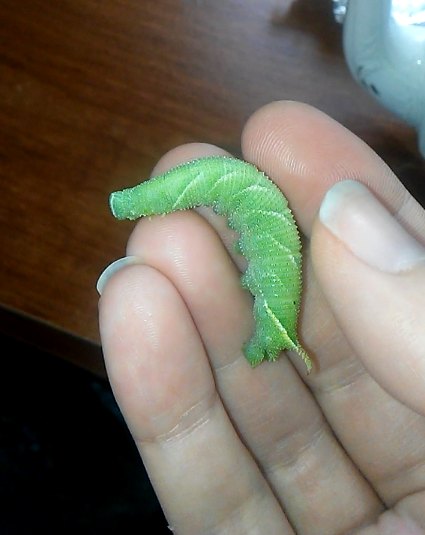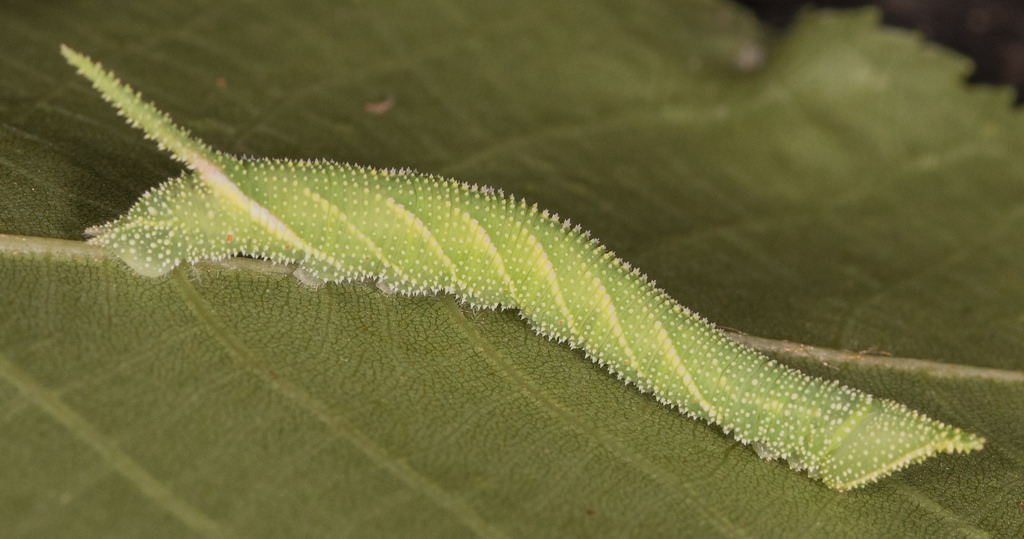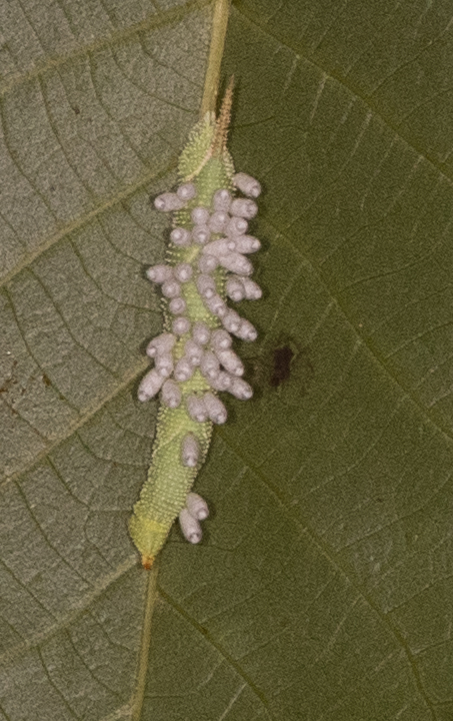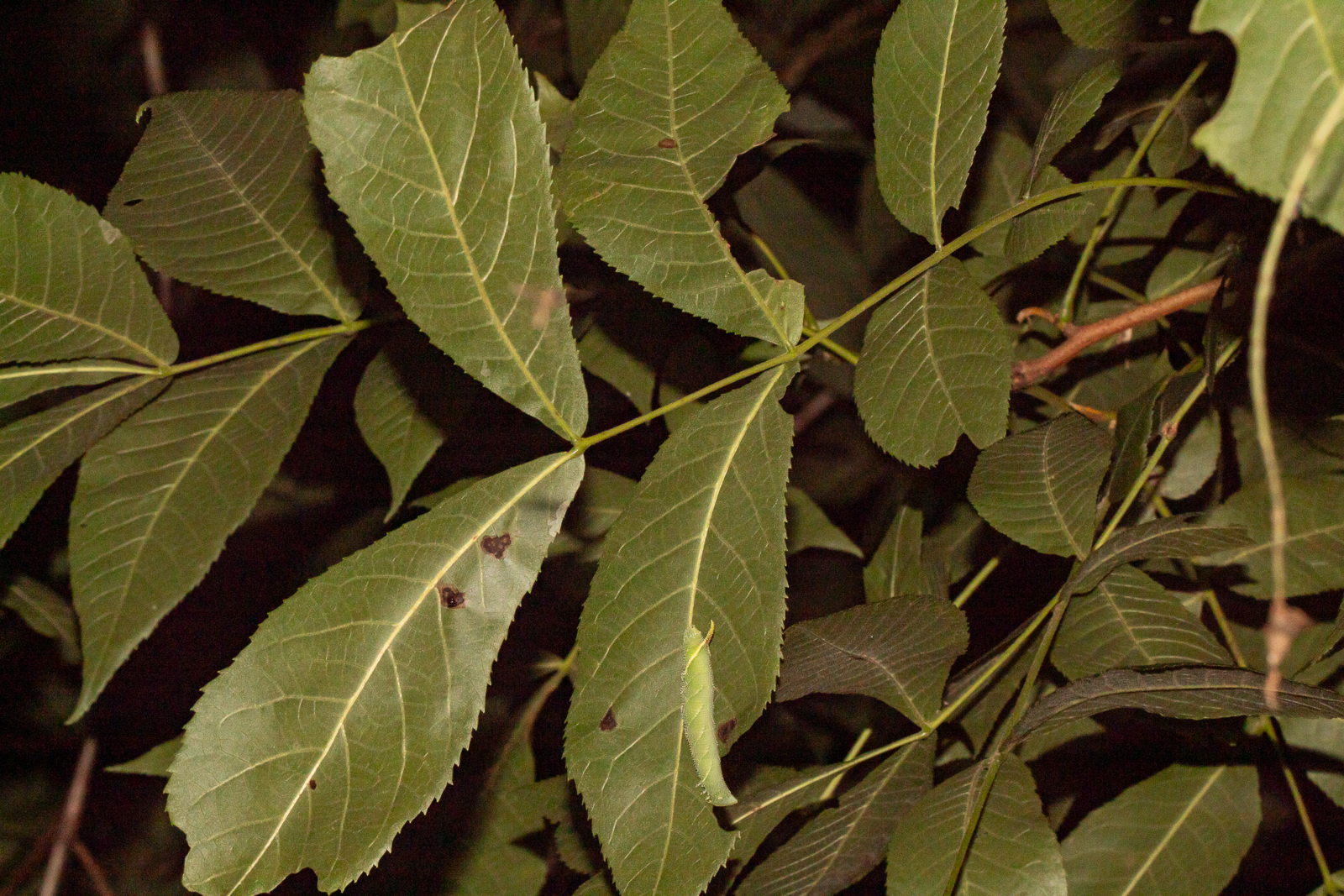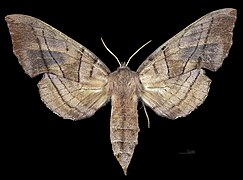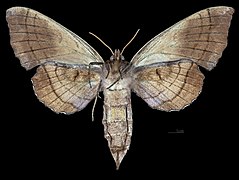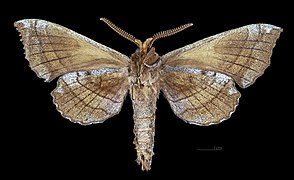Map Snapshot






















149 Records
Relationships
Host plants include Hophornbeam, Black Walnut, Butternut, Pecan, Mockernut Hickory, and various birch species (Betula) (Database of the World's Lepidopteran Hostplants).
Seasonality Snapshot
Source: Wikipedia
| Walnut sphinx | |
|---|---|
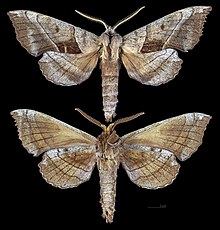
| |
| Scientific classification | |
| Domain: | Eukaryota |
| Kingdom: | Animalia |
| Phylum: | Arthropoda |
| Class: | Insecta |
| Order: | Lepidoptera |
| Family: | Sphingidae |
| Tribe: | Mimatini |
| Genus: | Amorpha J. Hübner, 1809 |
| Species: | A. juglandis
|
| Binomial name | |
| Amorpha juglandis (J. E. Smith, 1797)[2]
| |
| Synonyms[2] | |
| |
Amorpha juglandis, the walnut sphinx, is the only species in the monotypic moth genus Amorpha, which is in the family Sphingidae, erected by Jacob Hübner in 1809. The species was first described by James Edward Smith in 1797.
Distribution
[edit]It is native to North America, where it is distributed from the Atlantic Ocean to the Rocky Mountains in Canada and the United States.
Description
[edit]The wingspan is 45–75 mm.
-
Female
-
Female underside
-
Male
-
Male underside
Biology
[edit]The adult moth is nocturnal, active mainly during the early hours of the night.[3]
The caterpillar feeds on alder (Alnus), hickory (Carya), hazelnut (Corylus), beech (Fagus), walnut (Juglans), and hop-hornbeam (Ostrya) species. When attacked by a bird, the caterpillar produces a high-pitched whistle by expelling air from pairs of spiracles in its abdomen. This antipredator adaptation may startle the bird, which may then reject the caterpillar.[citation needed]
References
[edit]- ^ NatureServe (2 August 2024). "Amorpha juglandis". NatureServe Network Biodiversity Location Data accessed through NatureServe Explorer. Arlington, Virginia: NatureServe. Retrieved 3 October 2024.
- ^ a b "Amorpha juglandis (Smith, J.E., 1797)". Sphingidae Taxonomic Inventory: Creating a taxonomic e-science. Retrieved 3 October 2024.
- ^ Fullard, James H.; Napoleone, Nadia (2001). "Diel flight periodicity and the evolution of auditory defences in the Macrolepidoptera". Animal Behaviour. 62 (2): 349. doi:10.1006/anbe.2001.1753. S2CID 53182157.
Further reading
[edit]- Bura, V. L.; Rohwer, V. G.; Martin, P. R.; Yack, J. E. (2010). "Whistling in caterpillars (Amorpha juglandis, Bombycoidea): Sound-producing mechanism and function". Journal of Experimental Biology. 214 (Pt 1): 30–7. doi:10.1242/jeb.046805. PMID 21147966.
- Knight, K. (2010). "Whistling Caterpillars Startle Birds". Journal of Experimental Biology. 214 (Pt 14): ii. doi:10.1242/jeb.054155. PMID 21834205.
External links
[edit]- Lotts, Kelly & Naberhaus, Thomas (2017). "Walnut sphinx Amorpha juglandis (J.E. Smith, 1797)". Butterflies and Moths of North America. Retrieved December 11, 2018.
- "Amorpha juglandis (J. E. Smith, 1797)". Sphingidae of the Americas. Archived June 29, 2006.
- Cotinis (December 19, 2012). "Genus Amorpha". BugGuide. Retrieved December 11, 2018.


